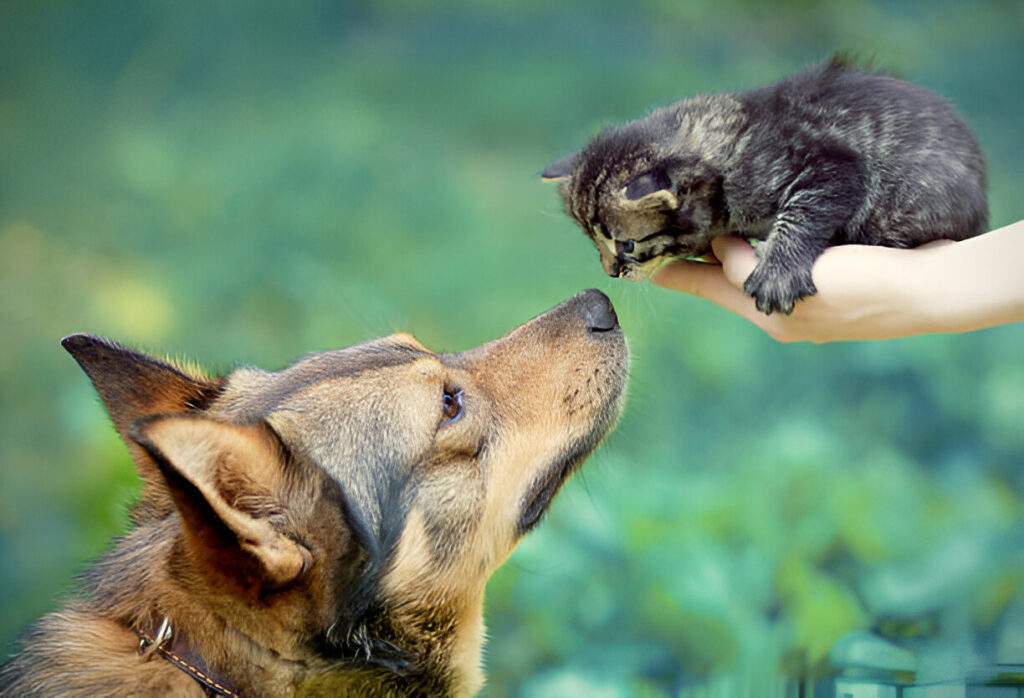As dog owners, we cherish every moment with our furry companions. From their playful puppy days to their more relaxed adult years, dogs bring endless joy and love into our lives. But as time goes on, our dogs age, just like we do.
Understanding when a dog is considered a senior is crucial for providing them with the care and attention they need to live a happy, healthy, and comfortable life in their golden years. In this blog, we’ll explore the factors that determine when a dog becomes a senior, the signs of aging to watch for, and how to support your dog as they transition into this stage of life.
The age at which a dog becomes a senior varies greatly and is determined by several factors, including breed, size, and overall health. Without having a universally defined age that fits all, here are some general guidelines:
- Small Breeds:
Small dogs, such as Chihuahuas, Dachshunds, and Toy Poodles, tend to have longer life spans and age at a slower pace.
- These are usually older dogs, around the age of 10 to 12 years.
- Medium Breeds:
- Medium breeds, like Beagles, Bulldogs, and Cocker Spaniels, would fall midway in aging between small and large breeds.
- They are generally older around 8 to 10 years of age.
- Large and Giant Breeds :
Larger breeds include German Shepherds, Golden Retrievers, and Great Danes; these tend to mature more quickly and don’t live as long. These dogs are usually considered seniors by 6 to 8 years of age.
It should be kept in mind these are just general guidelines and the individual dog will vary depending upon his genetics, lifestyle and health in general.
Factors That Influence Aging in Dogs
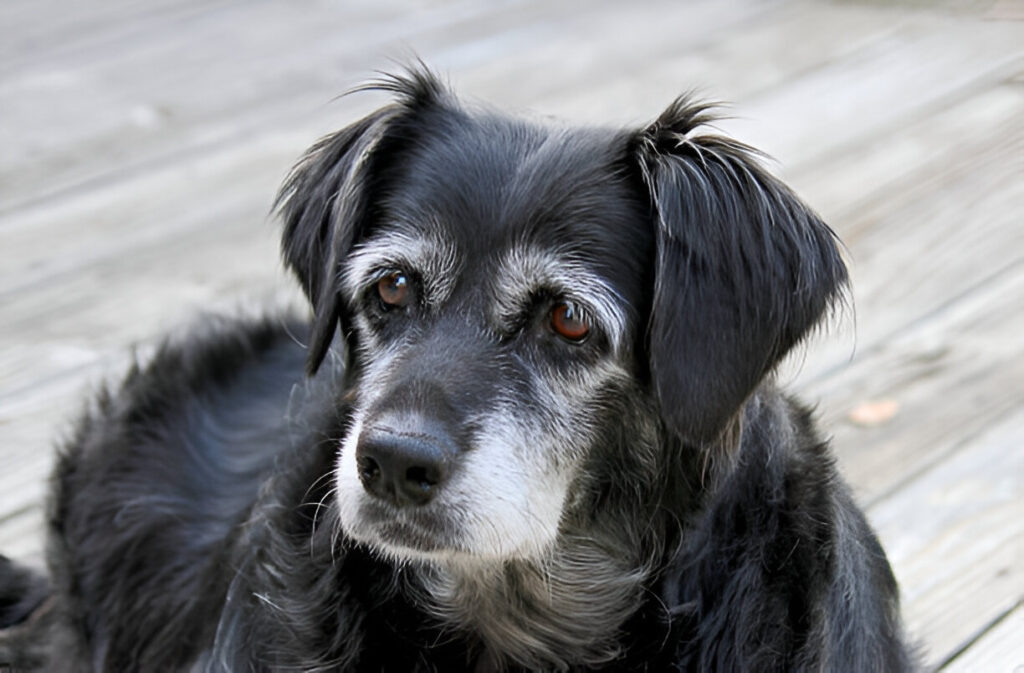
A dog is generally considered a senior when it reaches the later stages of its life, which varies depending on breed, size, and overall health. Several factors contribute to the aging process in dogs, influencing how quickly they age and the quality of their senior years. Understanding these factors can help pet owners provide the best care for their aging companions.
1. Breed and Size
Breed and size play a significant role in determining a dog’s lifespan and aging process. Smaller dog breeds, such as Chihuahuas or Dachshunds, tend to live longer and age more slowly compared to larger breeds like Great Danes or Saint Bernards.
This is partly because larger dogs experience more stress on their bodies due to their size, which can lead to earlier onset of age-related issues such as joint problems, heart conditions, and arthritis. Smaller breeds, on the other hand, often enjoy a longer lifespan and may not show signs of aging until they are well into their teens.
2. Genetics
A dog’s genetic makeup is a key factor in its aging process. Some breeds are predisposed to certain health conditions that can affect their longevity and quality of life. For example, Golden Retrievers are prone to cancer, while Bulldogs may face respiratory issues due to their brachycephalic (short-nosed) structure.
Genetic factors also influence how quickly a dog shows signs of aging, such as graying fur, reduced mobility, or cognitive decline. Responsible breeding practices and genetic testing can help mitigate some of these risks, but genetics remain a significant determinant of how a dog ages.
3. Diet and Nutrition
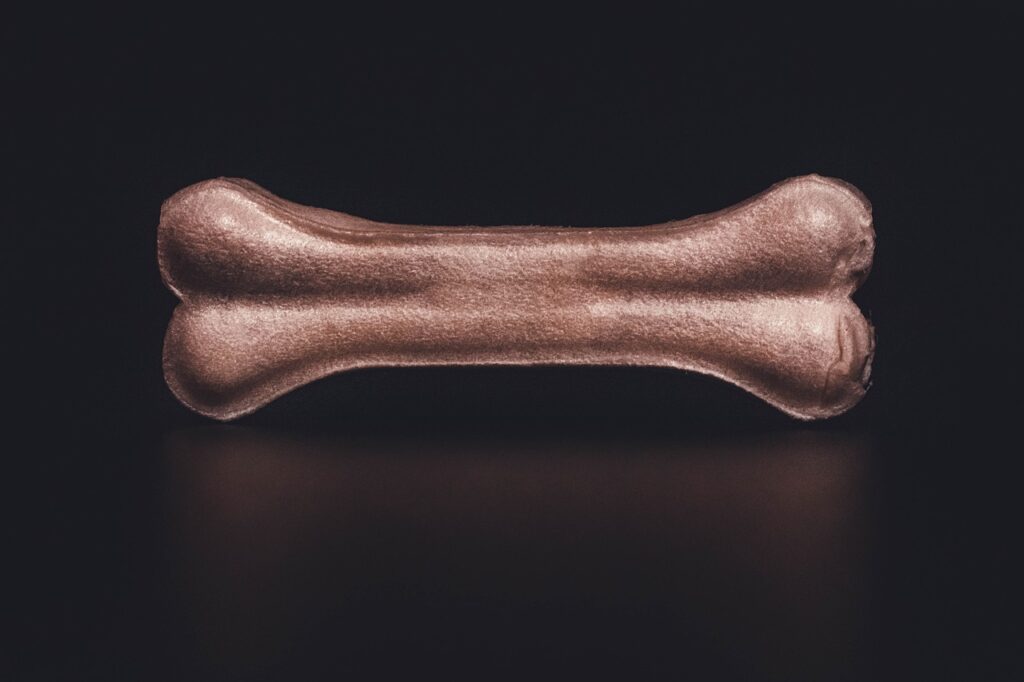
Image by Szabolcs Molnar
Proper nutrition is essential for maintaining a dog’s health and slowing the aging process. A balanced diet tailored to a dog’s age, size, and activity level can help prevent obesity, support joint health, and boost the immune system.
Senior dogs, in particular, benefit from diets rich in high-quality protein, omega-3 fatty acids, and antioxidants, which can help combat inflammation and support cognitive function. On the other hand, poor nutrition or overfeeding can accelerate aging, leading to weight gain, joint problems, and other health issues.
4. Exercise and Activity Level
Regular exercise is crucial for keeping a dog physically and mentally healthy throughout its life. Moderate activity helps maintain muscle mass, joint flexibility, and cardiovascular health, all of which contribute to a slower aging process. However, the type and intensity of exercise should be adjusted as a dog ages.
Overexertion or high-impact activities can strain an older dog’s joints and lead to injuries, while a complete lack of exercise can result in weight gain, muscle atrophy, and a decline in overall health. Finding the right balance is key to supporting a senior dog’s well-being.
5. Healthcare
Routine veterinary care is one of the most important factors in ensuring a dog ages gracefully. Regular check-ups allow for early detection and management of age-related conditions such as arthritis, diabetes, or kidney disease. Preventative care, including vaccinations, dental cleanings, and parasite control, also plays a vital role in maintaining a dog’s health as it ages.
Additionally, senior dogs may benefit from specialized care, such as joint supplements, pain management, or cognitive support, to improve their quality of life.
6. Environment and Lifestyle
A dog’s living environment and lifestyle can significantly impact its aging process. Dogs that live in safe, stress-free environments with plenty of mental stimulation tend to age more slowly than those exposed to chronic stress or neglect. Mental enrichment, such as puzzle toys or training exercises, can help keep a senior dog’s mind sharp and delay cognitive decline.
Similarly, a comfortable living space with easy access to food, water, and resting areas can make a big difference for older dogs with mobility issues.
7. Spaying and Neutering
Spaying or neutering a dog can influence its aging process and overall health. These procedures can reduce the risk of certain cancers and reproductive diseases, potentially extending a dog’s lifespan. However, the timing of spaying or neutering can also play a role, as early procedures may affect growth and development in some breeds. Consulting with a veterinarian about the best timing for these procedures is important for long-term health.
Signs Your Dog Is Entering Their Senior Years
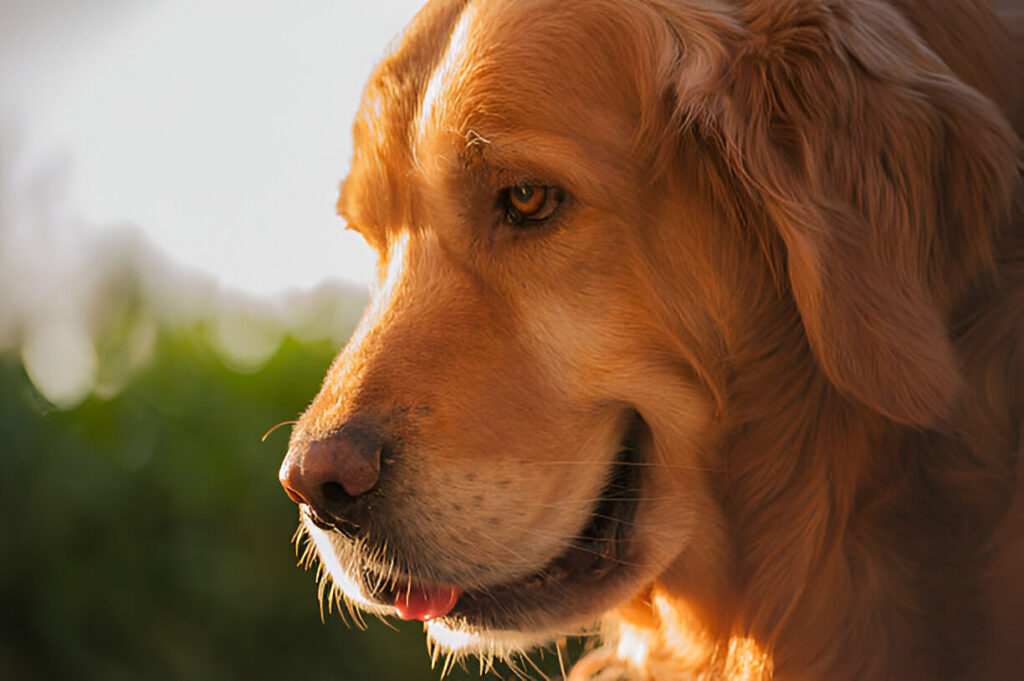
With age, your dog may exhibit changes in behavior, appearance, and health in general. Here are some common signs of aging in dogs:
- Gray Hair:
- Just like humans, dogs may develop gray hair, particularly around their muzzle and face, with increasing age.
- Reduced Energy Levels:
- Older dogs are not as active as when they were younger; thus, they sleep more.
- Changes in Weight:
- Older dogs might gain weight due to slow metabolism or lose weight as a result of some other hidden problems.
- Joint Stiffness and Mobility Issues:
- Arthritis and other joint issues may affect aging canines and lead to stiffness, challenges with climbing stairs, or not wanting to jump anymore.
- Changes in Appetite:
- Senior dogs may become less interested in their food or may want more food.
- Dental Issues:
- Aging dogs can develop more dental issues, like gum diseases and losing teeth.
- Cognitive Changes:
- Senior dogs may show signs of cognitive decline, which can be manifested through confusion, disorientation, or altered sleep patterns.
- Hearing and Vision Loss:
- Aging can be associated with a decline in sensory functions, such as hearing and vision.
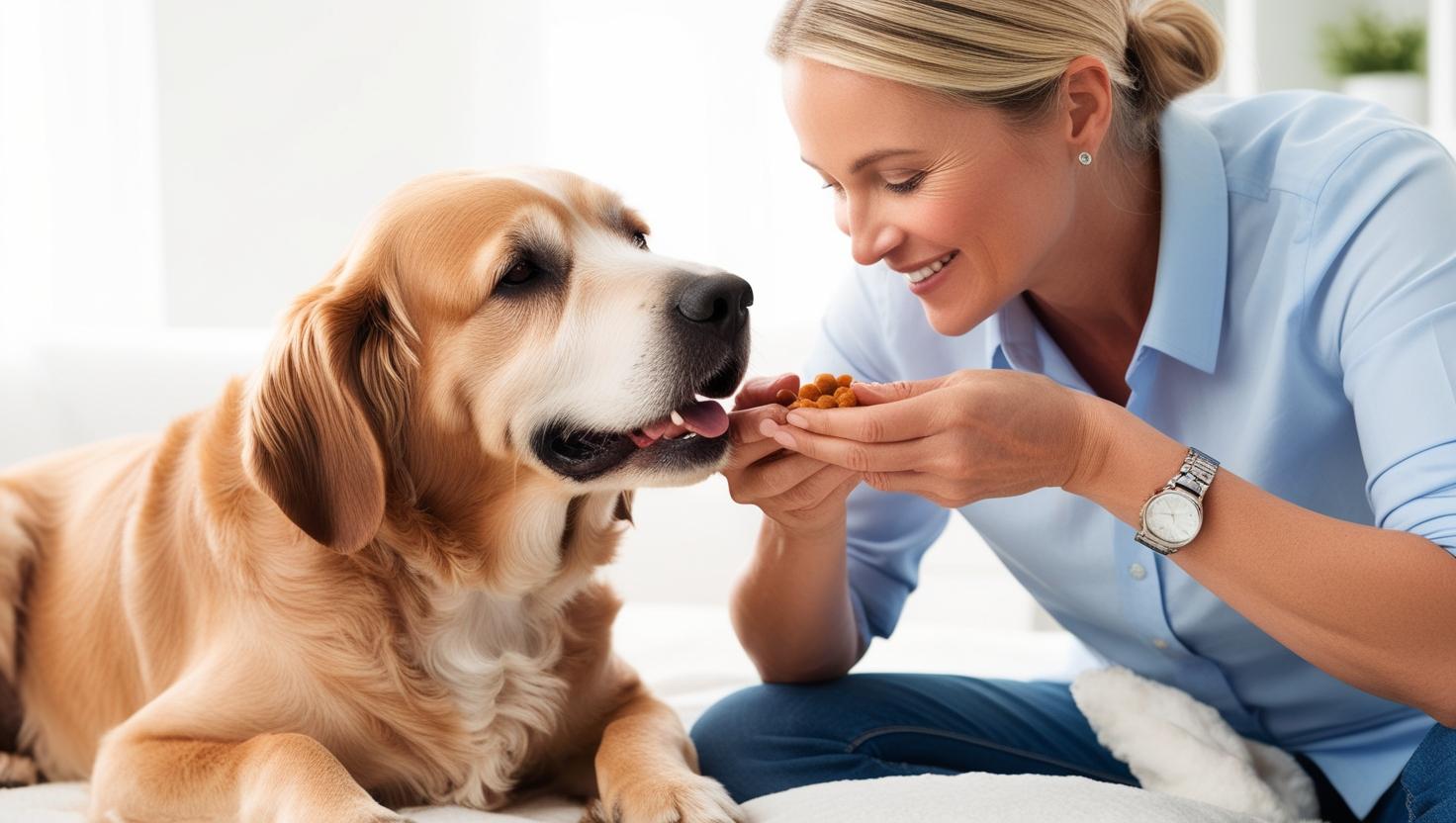
How to Support Your Senior Dog
Caring for a senior dog requires some adjustments to ensure they remain comfortable and healthy. Here are some tips for supporting your dog as they age:
- Regular Veterinary Checkups:
- Schedule bi-annual veterinary visits to monitor your dog’s health and catch any potential issues early.
- Adjust Their Diet:
- Transition to senior dog food, which contains fewer calories and yet has more nutritional content that would help through changes in the systems.
- Supplements in the food will also be needed, such as adding glucosamine and chondroitin to support the health of the joints.
- Moderate Exercise:
- While much of the energy that once characterized them may not be as present any longer, it is important for continued mobility and stimulation to provide gentle but frequent exercise regularly.
- Short walks, light play, and swimming work great for older dogs.
- Provide Comfortable Sleeping Areas:
- Purchase an orthopedic dog bed to give extra support for joints to your senior dog and make them comfortable sleeping in it.
- Keep Up on Dental Care:
- Regularly brush your dog’s teeth and provide professional dental cleanings when needed.
- Adapt Your Home:
- Make your house more friendly towards your senior dog by adding ramps, non-slip mats, and accessibility to food and water with ease.
- Monitor Their Weight:
- Monitor your dog’s weight closely and adjust either their diet or exercise to maintain a healthy weight; this can avoid obesity or even excessive weight loss.
- Be More Patient and Tolerant
D Special older dogs may demand more patience and understanding in the battles they must wage against aging. Give them much love and attention; in this way, they will be able to feel secure.

Common Health Problems Among Senior Dogs
As dogs age, they become vulnerable to specific diseases. Being prepared for these instances will help you give your aged dog appropriate care:
- Arthritis:
- Arthritis: This is a common ailment in aging dogs, where joints ache and stiffen. The treatments can range from simple medication and supplements to physical therapy.
- Dental Disease:
- Dental problems can cause pain, infection, and other health issues. Regular dental care is crucial for older dogs.
- Kidney Disease:
- Kidney disease: It is very common in aged dogs, and the signs are increased thirst, frequent urination, and weight loss.
- Heart Disease:
- Older dogs carry a higher risk for heart conditions, including congestive heart failure. Regular checkups will be able to find these and help with management.
- Cognitive Dysfunction Syndrome (CDS):
- CDS is the feline version of dementia: confusion, disorientation, and changes in behavior. Some symptoms may be alleviated by medication and enrichment of the environment.
- Cancer:
- Cancer incidence increases with age. The sooner the diagnosis and treatment, the better the prognosis.
- Vision and Hearing Loss:
Age-related vision and hearing loss are so common for older dogs. By altering your home and routine, your dog can better adapt to these changes.
The Emotional Side of Caring for a Senior Dog
Caring for an aging dog can be emotionally draining, especially when the signs of aging and decline start to become apparent. It’s about continuing to enjoy time with your dog while doing your best to make sure they have the best quality of life. Here are some ways to cope with the emotional aspects of caring for a senior dog:
- Celebrate the Small Moments:
- In short, stop and smell the roses, if you will, with a wagging tail or nuzzle.
- Make Memories to Treasure:
- Record those moments in photographs, video, or even a journal so that you will remember those golden years of your dog.
- Get Support:
- Reach out to friends, family members, and online communities for advice and support as you navigate this stage of life with your dog.
- Focus on the Quality of Life:
- With the help of your veterinarian, make sure your dog remains comfortable and happy during their golden years.
Conclusion
The definition of a dog becoming older is quite strongly based on certain variables that include breed, size, and health concerns. With the knowledge of these signs, it is about providing your dog with the much-needed care and support required to enjoy old age. Keep in mind that this is just one stage in life. Give your dogs the love and patience they require, and proper care will definitely make this stage of life comfortable and happy for your dear pet.
Key Takeaways:
- The small breeds usually start being seniors around 10-12 years; the medium, at around 8-10 years; and the large breeds start as seniors from about 6-8 years.
- Common age-related issues: decrease in energy, stiffness in the joints, change in appetite or mood
Provide regular veterinary care to your dog with proper nutrition and comfortable living. Cherish your time with him and enjoy building lasting memories with your aged buddy.



